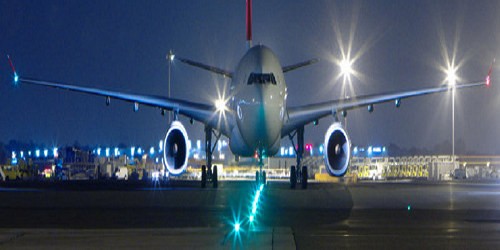Most Popular
-
Bulletproof Glass Industry Trends
Bulletproof Glass Industry Trends,s indicated by a market report distributed by Persistence Market R.. -
Areas of Revolution in Urban Mobility
It promises to be the most far-reaching advance in mobility since the invention of the automobile it.. -
Industrial IoT, The agent of change for Defense system
The Internet of Things (IoT) is today's business push to incorporate a wide assortment of specialize.. -
Imperatives of Big Data Analytics in Defence
Defence and Security related data being generated from numerous sources should be completely dissect.. -
Airlines need to fund Pilot training
A move far from the compensation to-fly plan and back towards the model of bearers paying for prepar.. -
Operational efficiency in Airlines
The interest for air travel is driving development in the business armada by 2025, expanding weight ..
IMPACT OF IOT IN AVIONICS
Internet of Things(IoT) has taken its place everywhere now. It is in which the everyday objects/things get connected to the internet so things can run smarter, smoother and most importantly logically. IoT has also started flying in the aviation industry. Aviation industry which is a hyper-competitive market, IoT can transform this industry by providing a unified experience of flying, baggage handling, improve operational efficiency, equipment monitoring, generating fuel efficiencies and even tracking pets in transit. That is., it will enable tracking, data collecting, analysis and control over it. Collectively, we can say, IoT connects people, technology, processes and culture to deliver a superior flying experience. It even has the potential to change business models. There are a lot more opportunity in this industry with the IoT and the challenge currently is where to focus.
This technology has already started experimenting this industry. Airlines now have the tools to reduce significantly or even eliminate the most common complaints such as luggage mishaps, flight delays and customer service issues. And customer service is high on the priority list for many airlines, and are using IoT technologies for it. One of the main issue that the passenger feel is about their bags, whether their bags have made the flight. So airlines are looking at smart bag tags that would allow passengers to track their baggage through a mobile app. And according to SITA’s Airline IT Trends Survey 2016, 71% airlines will offer real-time baggage status information to passengers in the next three years. Even check –in is in the top priority for using IoT for 42% airlines.
IMPACT OF IOT ON PASSENGERS
IoT is significantly changing the industry slowly with giving benefits to both customers and the business. The following are examples of airlines who are early trendsetters of this.
1. EasyJet, claiming to the first airline to use wearable tech, it has equipped cabin crew and ground staffs with wearable tech uniforms which is fitted with LED’s to provide visual guidance to passengers and built-in microphones for direct communication with the passengers, pilot and crew members.
2. Helsinki Airport in Finland uses Wi-Fi and iBeacons to track passengers and offer location- based services. It sends push notifications to travellers to prevent queues based on their exact location.
3. Miami International Airport has also introduced a mobile app ‘MIA Airport Official 2.0’ that provides detailed information to passengers based on their location and needs. And airport officials have reported 3,000 downloads on the first day and positive feedback from travellers. The airport has a network of 500 beacons that provides detailed information and personalized services to customers throughout the airport.
4. Delta is the first US carrier to use Radio Frequency Identification (RFID) baggage tracking technology. Passengers can see their baggage location on the way to the aircraft, on the plane, and on its way to baggage claim by using Delta’s mobile app. Even for pets shipping Delta is also using GPS tracking technology from Sendum Wireless. The system provides real-time location, temperature and humidity data.
5. Qantas did partnership with Samsung Electronics and launched the Virtual Reality Entertainment. The in-flight VR headsets enable viewers to watch the inflight latest movies, view all Qantas products, see possible destinations and even the airlines can also predict the most attractive offerings to a particular passenger based on their previous use of the VR headset.
These are the few examples of how IoT has started getting into our lives by providing us a seamless experience in travelling, enhancing the operational efficiency, and even empowering connected aviation.
IoT is transforming the aviation industry and is making a pleasant travelling for the passengers. It is not only giving benefits to the passengers but also to the industry. The future of IoT in the sky has started flying.
